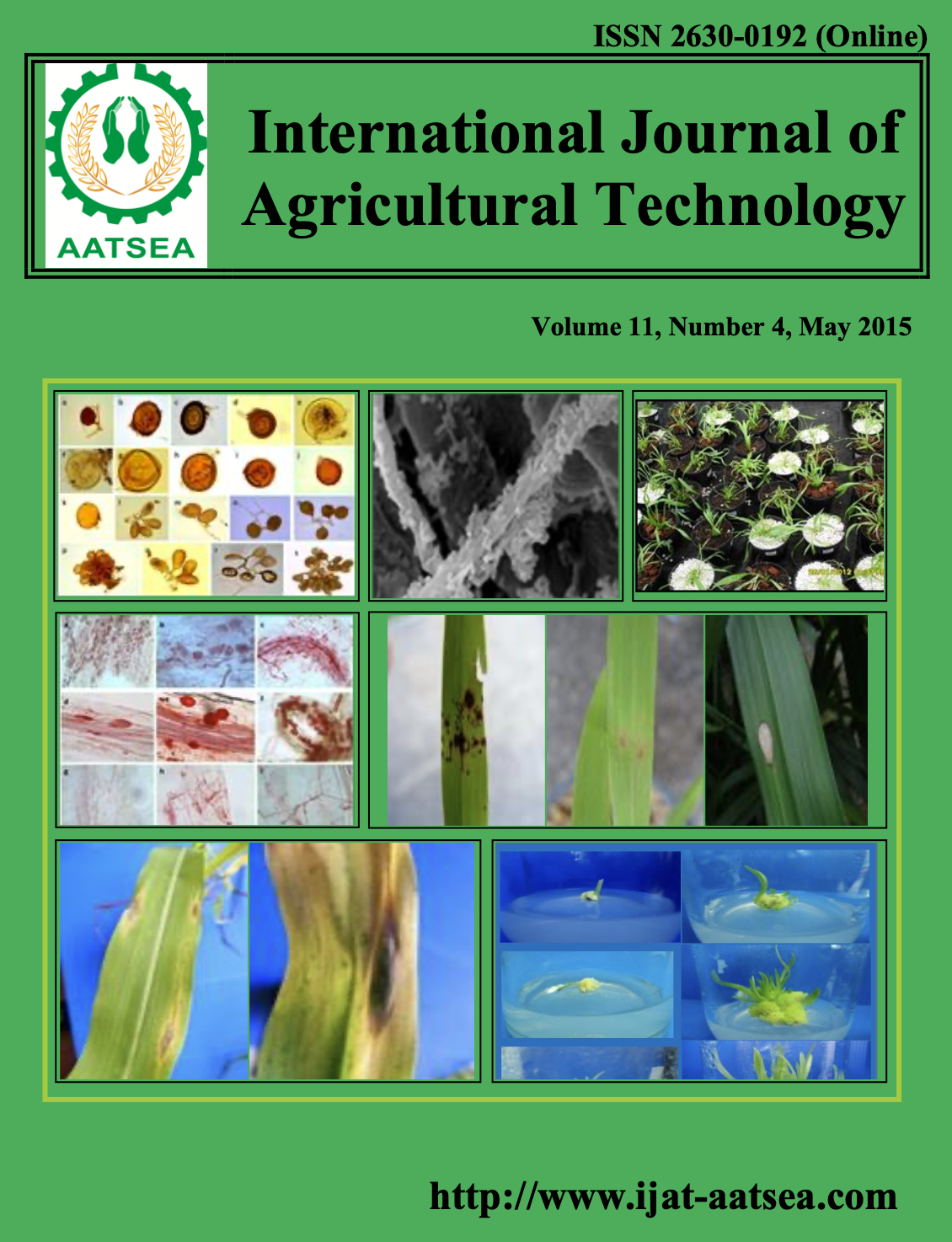A study on the effect of washing kernel on yield, colour and a rheological property of snake gourd oil
Main Article Content
Abstract
Article Details

This work is licensed under a Creative Commons Attribution-NonCommercial-NoDerivatives 4.0 International License.
References
Ajay, V., Piyush, K. and Gagan, A. (2014). Study of rheological properties of industrial lubricants. Hindawi Conference Papers in Science.
Aydin, H. and Bayindir, H. (2010). Performance and emission analysis of cotton seed oil methyl ester in a diesel engine. Renewable Energy 35:588-592.
Azian, M. N., Kamal, A. A. M., Panau, F. and Ten, W. K. (2001). Viscosity estimation of their triacylglycerols and of some vegetable oils based on their triacylglycerols composition. Journal of American oil chemist 78:1001-1005.
Bayarri, S., Cavo, C., Costell, E. and Duran, L. (2001). Influence of colour on perception of sweetness and fruit flavor of fruit drinks. Food Science and Technology Internationa l7:399- 404.
Bernat, E., Jordi-Roger, R., Grau, B., Antoni, R. and Rita, P. (2012). Temperature dependent of density and viscosity of vegetable oil. Biomass and Bioenergy (Science direct) 42:164 -171.
Blangino, E., Riveros, A. F. and Romano, S. D. (2008). Numerical expressions for viscosity, surface tension and density of biodiesel analysis and experimental validation. Physical Chemistry 46:527-547.
Dupriez, H. and De Leener, P. (1989). African garden and orchards-growing vegetable and fruits. Belgium : Terres.
FAO (1998). The global plan action on plant genetics resources for food and agriculture. Food and Agricultural Organization, Rom, Italy. 104 pp.
Fashina, O. O. and Colley, Z. (2008). Viscosity and specific heat of vegetable oil as a function of temperature “35 oC to 180 oC”. International Journal of food properties 11:738- 746.
Garber Jr, L. L., Hyatt, E. M. and Starr Jr, R. G. (2000). The effects of food color on perceived flavor. Journal of Marketing Theory and Practice 8:59-72.
Garber Jr, L. L. and Hyatt, E. M. (2003). Color as a tool for visual persuation. In persuasive imagery: A consumer response perspective. In Scoft, L. M. and Batra, R. (Eds). pp. 313-336.
George, H. V. D., Wuillemin, D. and Spence, C. (2014). Does colour of the mug influence the taste of the coffee?. Flavour 3:1-4.
Idowu, D. O. and Owolarafe, O. K. (2014). Physical properties of snake gourd seed (Trichosantes cucumerina L) relevant in grading and separation. Agricultural Engineering International 16:303-312.
Kelle, U. V. (2011). USDA official standard for soybeans. United States No.2 yellow soybeans, 18815 8th Ave. North, Suite 20, Plymouth, MN 55447, USA.
Lamuel, M. D. and Tianyins, L. (2014). Absolute viscosities of vegetable oils at different temperatures and shear rate range of 64.5 to 4835 m/s. journal of Food processing.
Maskan, M. (2003). Change in colour and rheological behavior of sunflower seed oil during frying and after absorbent treatment of used oil, European journal of food research and technology 218:20-25.
Moron-Villarreyes, J. A., Soldi, C., Amorim, A. M., Pizzolatti, M. G., Mendonca, A. P., Doca, M. G. M. (1983). Diesel/biodiesel proportion for by-compression ignition engines. Fuel 86:1977-1982.
Nasreen, D. (2013). The effect of deep heating on rheological behavior of edible vegetable oils. Current Trends in Technology and Science 2:323-326.
Ndom, R. J. E., Elegbeleye, A. O. and Ademoroti, A. O. (2011). The effect of colour on the perception of taste, quality and preference of fruit flavor drinks. Ife Psychologia 19:1-6.
Oguz, H., Ogut, H. and Eryilmaz, T. (2007). Investigation of biodiesel production, quality and performance in Turkey. Energy Source Part A 29:1529-1535.
Rao, M. A. (1999). Rheology of fluid and semi fluid foods, principles and applications. Gaithersbug, USA: Aspen publication.
Santos, J. C. O., Santos, I. M. G. and Souza, A. G. (2005). Effect of heating and cooling on rheological parameters of edible vegetable oils. Journal of food Engineering 67:401-405.
Schlosherg, R. H., Chu, J. W., Knudsen, G. A., Suciu, E. N. and Aldnch, H. S. (2001). High stability esters for synthetic lubricant applications. Lubrication Engineering 57:21-26.
Spence, C., Levitan, C. A., Shankar, M. U. and Zampini, M. M. (2010). Does food color influence taste and flavor perception in humans?. Chemosensory Perception 3:68-84.
Steff, J. F. (1992). Rheological methods in food process Engineering. Mich, USA: Freeman press East Lansing.
Utlu, Z. and Kocak, M. S. (2008). The effect of biodiesel fuel obtained from waste frying oil on direct injection on diesel engine performance and exhaust emissions. Renew Energy 33:1936-1941.
Woydt, M. (2007). Low SAP and alternative engine oil development and testing. Journal of ASTM International 4:6.
Zampini, M., Sanabria, D., Phillips, N. and Spence, C. (2007). The multisensory flavor perception assessing the influence of color cues on flavor discrimination responses. Food qual. Preference 18:975-984.


